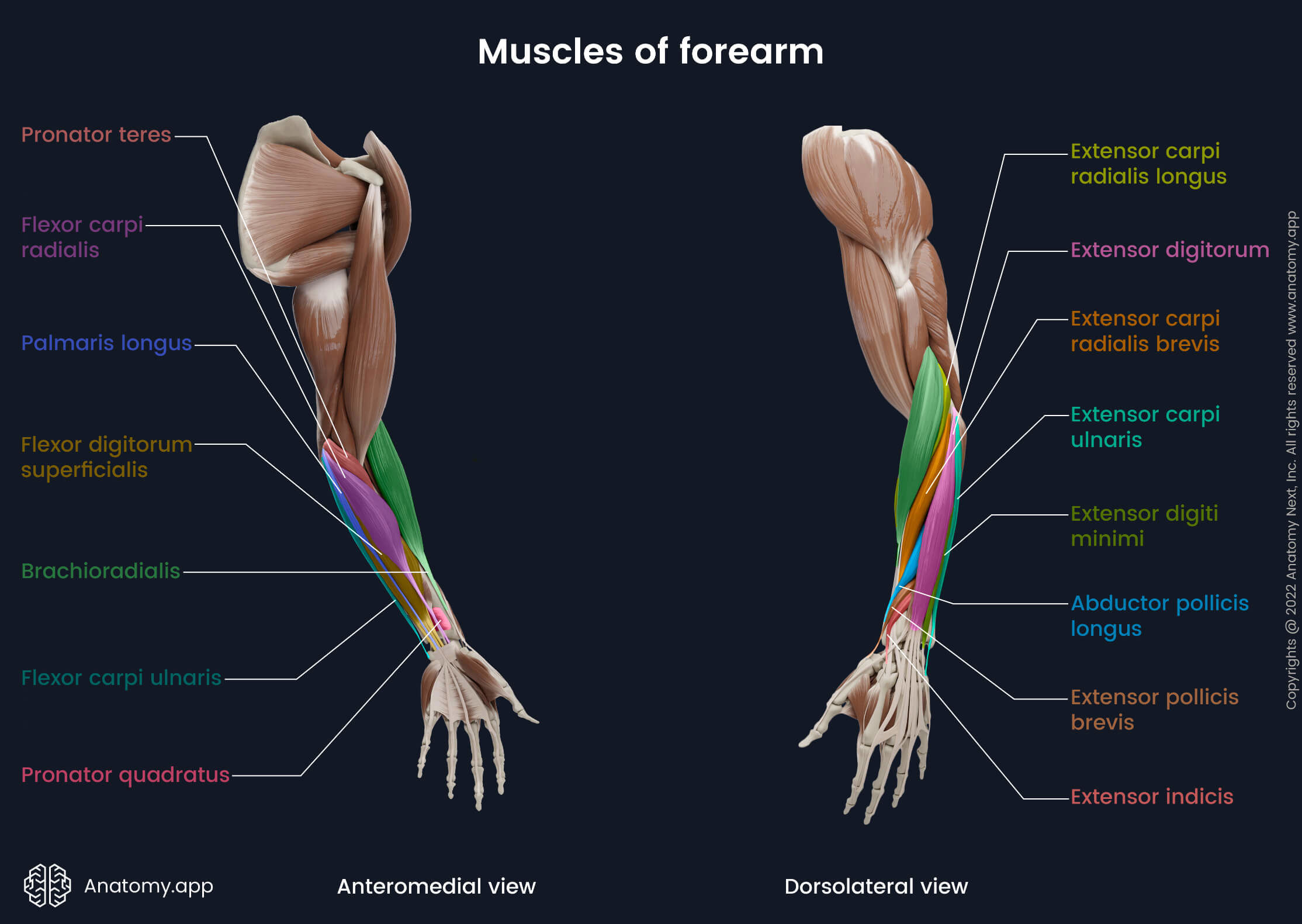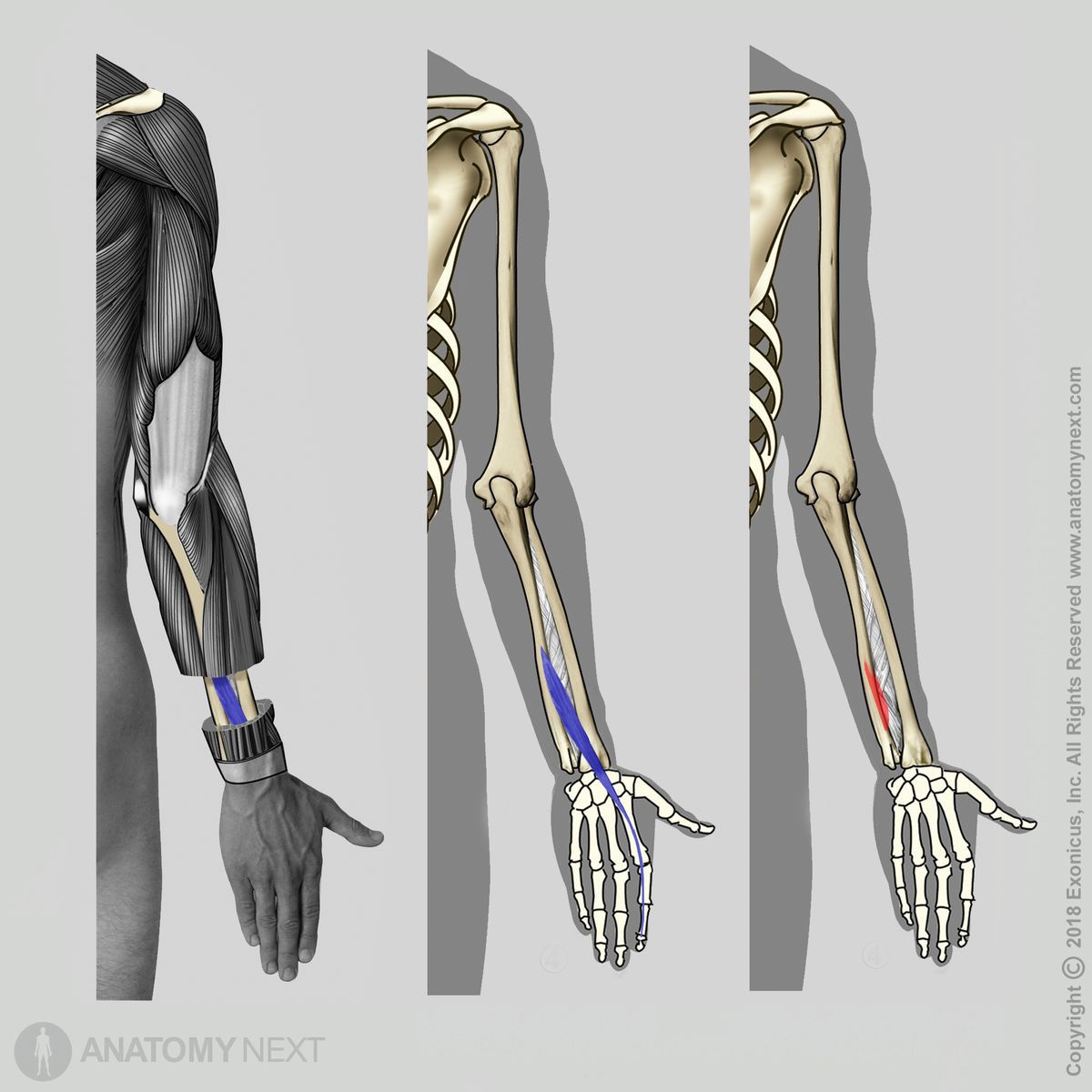- Anatomical terminology
- Skeletal system
- Joints
- Muscles
- Head muscles
- Neck muscles
- Muscles of upper limb
- Muscles of pectoral girdle
- Muscles of shoulder region
- Muscles of upper arm
- Muscles of forearm
- Anterior compartment
- Lateral compartment
- Posterior compartment
- Muscles of hand
- Thoracic muscles
- Muscles of back
- Muscles of lower limb
- Heart
- Blood vessels
- Lymphatic system
- Nervous system
- Respiratory system
- Digestive system
- Urinary system
- Female reproductive system
- Male reproductive system
- Endocrine glands
- Eye
- Ear
Extensor indicis
The extensor indicis (Latin: musculus extensor indicis) is a relatively flat, narrow muscle of the forearm that extends between the ulna and the phalanges of the second finger. It belongs to the posterior compartment of the forearm muscles, lying in the second (deep) layer. The extensor indicis acts at all joints of the index finger.
| Extensor indicis | |
| Origin | Distal one-third of posterior surface of ulna, interosseous membrane of forearm |
| Insertion | Bases of middle and distal phalanges of 2nd finger |
| Action | Extension of 2nd finger |
| Innervation | Posterior interosseous nerve of radial nerve (C7, C8) |
| Blood supply | Anterior and posterior interosseous arteries |

Origin
The extensor indicis muscle originates from the distal one-third of the posterior surface of the ulna and interosseous membrane of the forearm.

Insertion
The extensor indicis descends to reach the second finger. It inserts on the bases of the middle and distal phalanges of the second digit of the hand.
Action
The extensor indicis muscle extends the second finger at the metacarpophalangeal and interphalangeal joints of the index finger.
Innervation
The extensor indicis is innervated by the posterior interosseous nerve, which is a branch of the radial nerve (C7, C8).
Blood supply
The extensor indicis muscle receives arterial blood supply from the anterior and posterior interosseous arteries. Both are branches of the common interosseous artery.